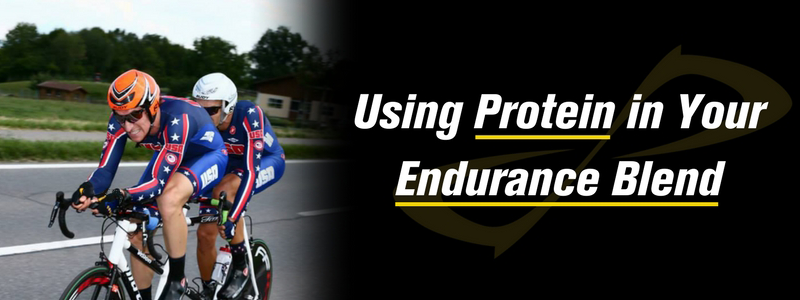Calculating Your Sweat Rate
- 21 May 2019

10 Simple Steps to Figure out your Sweat Rate
Do you know how much you sweat per hour? If you don’t, you probably should.
Sweat rate is a critical piece of information for athletes, and it is actually fairly easy to figure out. But this relatively simple data point can have a major impact on your performance.
Studies have shown as little as a 0.5% loss of body water can cause increased strain on the heart, and as little as 2-3% of total body weight can cause declines in performance — That is just 3 - 4.5 pounds for a 150 pound individual, which can easily happen during an endurance training session or race, especially during hot or humid conditions!

How to Do a Sweat Rate Test
Follow these simple steps to determine your hourly sweat losses, and start your own sweat rate log:
- Empty your bladder and step on the scale (do this nude or in a swimsuit for accuracy)
- Record your starting weight:
Pre-exercise weight = ___________ lbs.(A)
- Record the starting temperature and humidity (for future records and comparison):
Temperature: ___________ ℉
Humidity: ___________ %
Dew Point: ___________ ℉
- Do your usual workout. Hydrate like you normally would, and track your consumption.
Important Note: Hold it! If you go to the bathroom during your workout or prior to your post-workout weigh in, the results will not be accurate.
- Record the approximate volume of fluid consumed during your workout, as well as the total duration.
How much you drank = ___________ fluid ounces (E)
Duration of workout: ___________ hours (F)
- Record the temperature and humidity at the end of the workout (for your records).
Temperature: ___________ ℉
Humidity: ___________ %
Dew Point: ___________ ℉
- Towel dry and then record your weight (nude or swimsuit).
Post-exercise weight = ___________ lbs.(B)
Note: If you have long and/or thick hair, blow dry your hair before weigh-in for the most accurate results.
- Determine the amount of weight (lbs) you lost during exercise by subtracting your post-exercise weight from your pre-exercise weight.
Weight Lost = _____lbs.(A) - ______lbs(B) = ________lbs. (C)
- Determine how many fluid ounces of sweat you lost by multiplying the number of pounds you lost by 16.
_____lbs lost (C) x 16 = ________ fluid ounces of water you lost (D)
- To determine hourly fluid replacement needs, add number of fluid ounces you lost (D) to the number of fluid ounces you consumed during the workout (E) and divide by the total duration of the workout.
(_____fluid ounces lost (D) + ___fluid ounces consumed (E)) ÷ ___hours (F) =_____fluid ounces needed to replace what is lost via sweat each hour
Note: A factor of 1.2-1.6 can be multiplied to hourly replacement needs when heat & humidity levels are extreme (>75% humidity).
Ready to try it for yourself?
Download a free Sweat Rate Test Worksheet so you can do this at home, and start logging your fluid needs.

Let’s run through an example:
- The athlete empties their bladder and steps on the scale in the buff.
- They record their starting weight:
Pre-exercise weight = 150.0 lbs.(A)
- The athlete records the starting temperature and humidity (for future records and comparison):
Temperature: 75 ℉ | Humidity: 80% | Dew Point: 68 ℉
- They do their usual workout, and hydrate like they normally would.
- The athlete makes sure to NOT use the restroom after their initial weigh in. They record the duration of the workout and approximate volume of fluid consumed during it.
Volume drank = 16 fluid ounces (E)
Duration of the workout: 1 hour (F)
- They record the temperature and humidity at the end of the workout:
Temperature: 80℉ | Humidity: 80% | Dew Point: 73 ℉
- The athlete strips down, towel dries, steps on the scale, and records their post-workout weight.
Post-exercise weight = 149.2 lbs (B)
- They can now determine the amount of weight they lost during exercise (C) by subtracting their post-exercise weight (B) from their pre-exercise weight (A).
Weight Lost = 150.0 lbs (A) - 149.2 lbs(B) = 0.8 lbs. (C)
- After figuring their weight loss, the athlete determines how many fluid ounces of sweat they lost by multiplying the number of pounds lost by 16.
0.8 lbs lost (C) x 16 = 13 fluid ounces of water lost (D)
- To figure out the hourly target, they add the number of fluid ounces lost (D) to the number of fluid ounces consumed during the workout (E) and divides that by the total duration of the workout.
(13 fluid ounces lost (D) + 16 fluid ounces consumed (E)) ÷ 1 hour (F) =
29 fluid ounces needed to replace what is lost via sweat each hour!

Sweat Rate is NOT a Constant
Sweat rates vary. Not only from individual to individual, but from day to day, and even hour to hour. Several factors can affect your sweat rate including heat, humidity, hydration, and elevated heart rate (high intensity training).
Sex and body composition can also play a factor. Males and more muscular individuals tend to have higher sweat rates than females and individuals with less muscle mass.

Regular endurance training can also increase your sweat rate, which is actually a good thing! A more trained and conditioned body will become more efficient at cooling itself, and sweating is the main way that your body cools itself.
These are all factors to be aware of as you progress in your training. Athletes should incorporate periodic sweat rate testing into their training schedule, and should measure sweat rate data across several workouts to determine their fluid replacement needs in various conditions.
About the Author
Colin Riley, MS, RDN, LD is INFINIT's Head Formulation Specialist, registered dietitian, a fourth year professional triathlete, and a USA Triathlon level 1 certified triathlon coach. Colin started his triathlon career while he was studying at the University of Dayton and Florida State University. Also in that time Colin received his Bachelor of Science in fitness and nutrition from University of Dayton and his Masters in Sports Nutrition from Florida State University.








